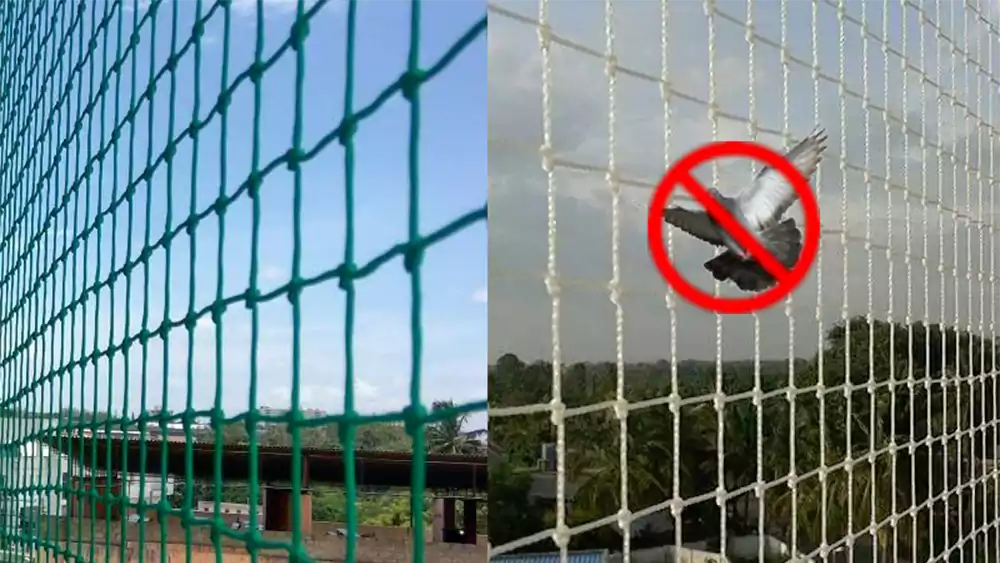Pigeon Nets Installation

Pigeon Nets Installation
Pigeon Net Installation Is A Specialized Process Aimed At Effectively Setting Up Protective Barriers To Deter Pigeons And Other Birds From Accessing Specific Areas Such As Balconies, Windows, And Rooftops. Proper Installation Is Crucial To Ensure The Effectiveness And Reliability Of Pigeon Nets In Controlling Bird Populations And Preventing Property Damage And Hygiene Issues.
Why Choose Us?
- Expertise and Experience
- Professional Installation
- Affordable Pricing
- High-Quality Materials
- Customized Solutions
- Excellent Customer Service
Here are the key steps involved in pigeon net installation:
Assessment : A thorough assessment of the property is conducted to identify areas prone to bird activity and determine the appropriate type and size of pigeon nets needed for installation.
Measurement : Accurate measurements of the installation area are taken to ensure that the pigeon nets are customized to fit securely and cover the entire targeted space.
Material Selection : High-quality pigeon nets made from durable materials such as high-density polyethylene (HDPE) or nylon are selected based on the specific requirements of the installation site, including weather conditions and expected bird activity.
Anchoring and Fixing : Pigeon nets are securely anchored and fixed to the surrounding structure using suitable fasteners and hardware. Proper anchoring ensures that the nets remain taut and stable, even in windy conditions.
Customization : Pigeon nets may need to be customized or trimmed to fit around obstacles such as protruding ledges, pipes, or architectural features while maintaining a seamless appearance.
Professional Installation : Pigeon net installation is typically carried out by experienced professionals who have the necessary skills and expertise to ensure proper fitting, anchoring, and alignment of the nets. Professional installers adhere to safety guidelines and regulations to minimize risks and ensure the safety of occupants and workers.
Inspection and Maintenance : After installation, pigeon nets are inspected for any defects or issues and maintained regularly to ensure continued effectiveness in bird control. Any damage or wear and tear are promptly addressed to prevent birds from bypassing the nets.
Overall, proper pigeon net installation is essential for effectively controlling bird populations, preventing property damage, and maintaining a safe and hygienic environment for occupants.
Frequently Asked Questions
- What is involved in the installation of pigeon nets?
The installation of pigeon nets involves measuring the area that needs protection, customizing the net to fit the specific dimensions, and securely attaching the net to the structure using hooks, anchors, or other fixtures. The process ensures that the net provides effective coverage and prevents birds from accessing the protected area.
- Who should install pigeon nets?
Pigeon nets should ideally be installed by professional technicians who have experience and expertise in net installation. Professional installation ensures that the nets are securely and properly fitted, providing maximum protection and longevity.
- How long does the installation of pigeon nets take?
The time required for installation depends on the size and complexity of the area being protected. Typically, a standard balcony or window area can be completed within a few hours. Larger or more complex installations, such as rooftops or large open spaces, may take longer.
- Can pigeon nets be installed on any type of structure?
Yes, pigeon nets can be installed on various types of structures, including balconies, windows, rooftops, air conditioning units, and other open spaces. The nets can be customized to fit different shapes and sizes, ensuring they provide effective protection for any structure.
- What maintenance is required after the installation of pigeon nets?
After installation, pigeon nets require minimal maintenance. They should be inspected regularly to ensure they remain in good condition and provide optimal protection. Cleaning the nets with water and mild detergent to remove dirt, dust, and bird droppings is recommended. Any damaged sections should be repaired or replaced promptly to maintain their effectiveness.

